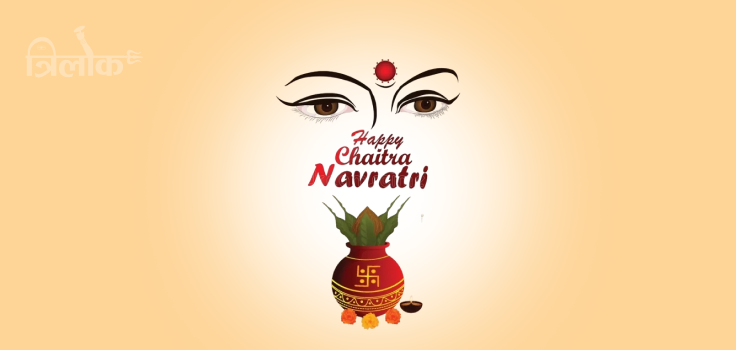
Chaitra Navratri 2025 – Ghatasthapana Muhurat, Date and Mantras
1279
Puja
Chaitra Navratri 2025 – Ghatasthapana Muhurat, Date, and Maa Durga Mantras
Chaitra Navratri 2025 will begin on March 30, 2025, with the Ghatasthapana Muhurat from 5:53 AM to 6:43 AM. Navratri, celebrated four times a year (Chaitra, Ashadha, Ashvin, and Magha), is particularly significant in Chaitra and Ashvin months. This year’s Chaitra Navratri is especially important due to its connection with Lord Ram’s birth.
Chaitra Navratri 2025 Ghatasthapana Muhurat:
On the first day of Navratri, devotees establish a Kalash (pot) at the auspicious time of Ghatasthapana, which will be between 5:53 AM and 6:43 AM on March 30, 2025. Additionally, an Abhijit Muhurat for Kalash installation is available from 11:37 AM to 12:26 PM.
Chaitra Navratri Puja Dates 2025:
- First Day (March 30, Sunday): Shailputri Puja
- Second Day (March 31, Monday): Brahmacharini Puja
- Third Day (April 1, Tuesday): Chandraghanta Puja
- Fourth Day (April 2, Wednesday): Kushmanda Puja
- Fifth Day (April 3, Thursday): Skandamata Puja
- Sixth Day (April 4, Friday): Katyayani Puja
- Seventh Day (April 5, Saturday): Kalratri Puja
- Eighth Day (April 6, Sunday): Mahagauri Puja
- Ninth Day (April 7, Monday): Ram Navami Puja
Dashami (April 8, Tuesday): Navratri Parana (completion of fast)
Maa Durga Mantras for Navratri 2025:
Devotees recite various mantras for their well-being, success, and prosperity. Here are a few powerful mantras to chant during Navratri 2025:
- For Well-being: “Sarv Mangal Mangalye, Shive Sarv Artha Sadhike, Sharanye Tryambake Gauri Narayani Namostute.”
- For Removal of Obstacles and Wealth: “Sarvabadha Vinirmukto, Dhan Dhananya Sutanvitah, Manushyan Matprasadena Bhavishyanti Na Sanshayah.”
- For Health and Prosperity: “Dehi Saubhagyaam Arogyaam, Dehi Me Paramam Sukham, Roopam Dehi Jayam Dehi, Yasho Dehi Dvisho Jahi.”
- For Protection: “Shoolena Pahi No Devi, Pahi Khadgen Chammbike, Ghantashvane Na Pahi, Chapajyani Shvane Na Cha.”
Devotees can chant these mantras during Chaitra Navratri to fulfill their wishes and seek blessings from Maa Durga. For maximum benefit, chant the mantras 108 times without interruption. Maintain purity and focus while reciting them.
Category
Shop For You
Reports for You
Welcome to Trilok App !




